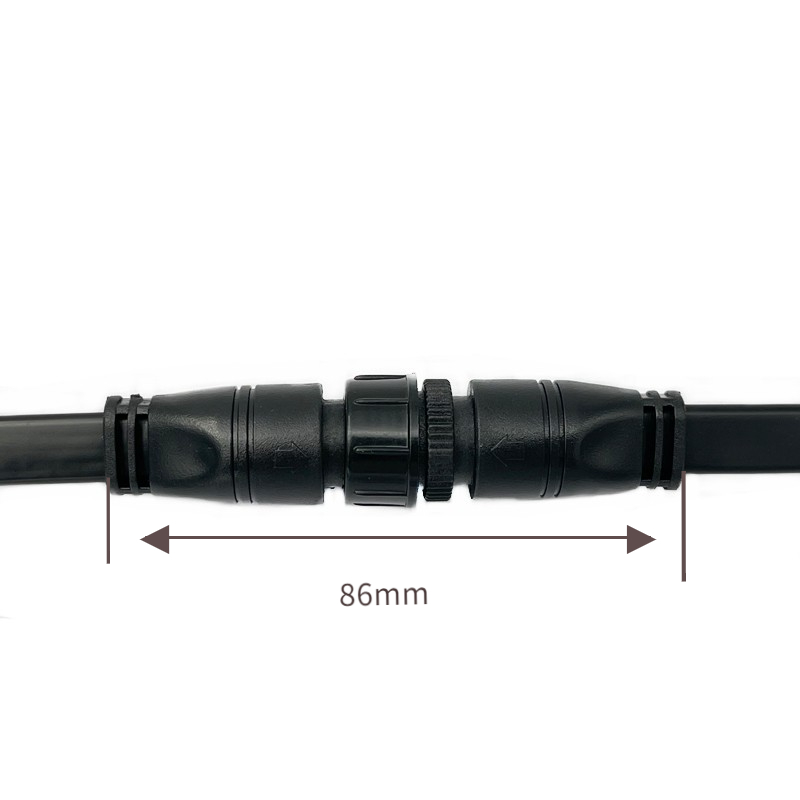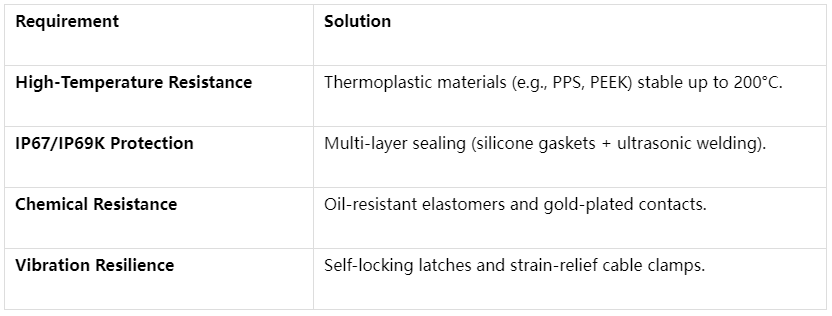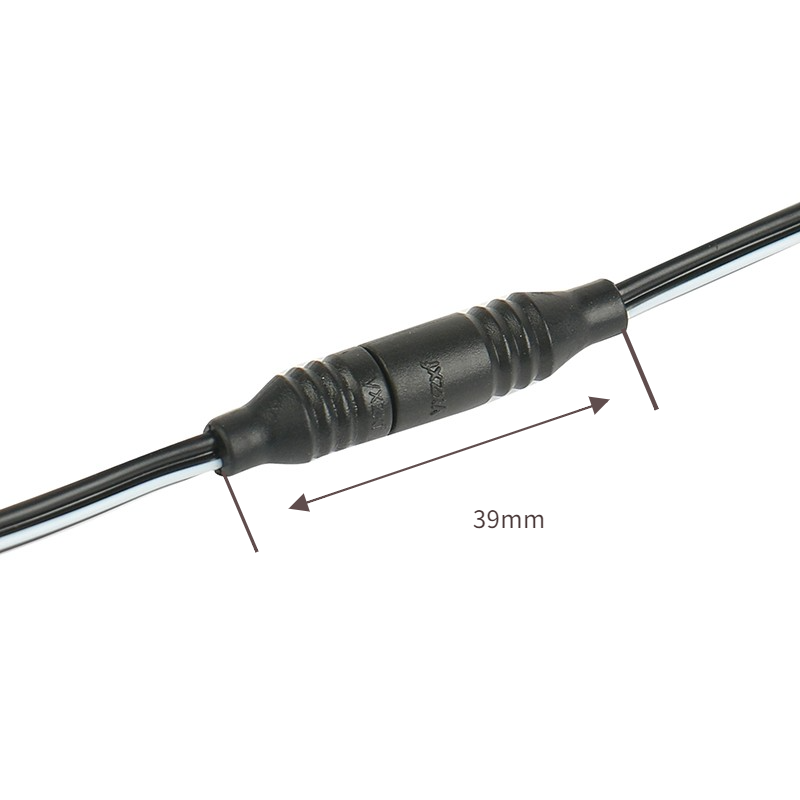News


News

Under-the-Hood Challenges: How Waterproof Automotive Electrical Connectors Survive Extreme Engine Bay Conditions
Release time:2025-03-14
viewed:430
The engine bay of a modern vehicle is a battlefield for electrical components. Temperatures soar to 150°C+, oil mist permeates every crevice, and vibrations threaten to shake connections loose. In this hostile environment, waterproof automotive electrical connectors are not just optional—they’re mission-critical.

The Engine Bay: A Worst-Case Scenario for Electrical Connections
Automotive engineers face three primary challenges when designing electrical systems for the engine compartment:
Extreme Heat
Temperatures near exhaust manifolds or turbochargers can exceed 150°C, melting standard plastics and degrading seals.
Oil and Chemical Exposure
Engine oil, coolant, and road contaminants (e.g., de-icing salts) corrode metal contacts and erode insulation.
Constant Vibration
Engine vibrations and road shocks can loosen connections, leading to intermittent failures.
A single compromised connector can disrupt ECUs, fuel injectors, or sensors, triggering warning lights, reduced performance, or even engine shutdown.
To withstand these challenges, waterproof automotive electrical connectors must meet rigorous standards:

Traditional rubber O-rings fail under extreme heat, but modern connectors use fluorosilicone seals that retain flexibility from -40°C to 200°C. For example, TE Connectivity’s DEUTSCH HDSeal connectors combine laser-welded housings with dual-material seals to block oil, fuel, and humidity.
Housings: High-performance polymers like PPS (polyphenylene sulfide) resist thermal expansion and chemical corrosion.
Contacts: Gold-plated terminals prevent oxidation, ensuring stable conductivity despite moisture or salt exposure.
Connectors like Amphenol’s AT Series feature click-lock mechanisms and TPE overmolding to absorb shocks. Rigorous testing simulates 20G vibration forces—equivalent to a truck driving off-road at 50 mph.
A leading automaker faced frequent ECU failures in its hybrid models due to oil mist infiltrating connectors. By switching to IP69K-rated waterproof automotive electrical connectors with oil-resistant seals, warranty claims dropped by 62% within 12 months.
ECUs: Secure sensor data transmission for ignition timing and emissions control.
Turbocharger Actuators: Survive exhaust heat and vibration.
Fuel Injection Systems: Resist gasoline and ethanol blends.

Under-the-hood connectors must comply with:
ISO 20653: Dust/water protection for road vehicles.
USCAR-2: Vibration and thermal cycling benchmarks.
LV214: Automotive-grade connector durability.
Testing includes:
Thermal Shock: Rapid cycles between -40°C and 140°C.
High-Pressure Wash: 80°C water jets at 100 bar (IP69K validation).
A truck manufacturer once used non-waterproof connectors in its diesel engines. Within months, saltwater intrusion corroded throttle position sensors, causing unplanned stops and $1.2M in recalls. Lesson: Never compromise on IP ratings or materials.
In the engine bay’s punishing environment, waterproof automotive electrical connectors are the unsung heroes of reliability. From hybrid ECUs to turbocharged systems, their ability to resist heat, chemicals, and vibration keeps vehicles running safely and efficiently.